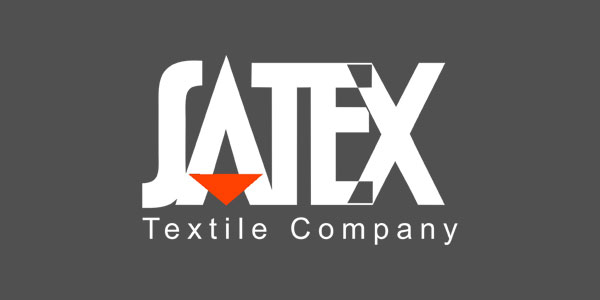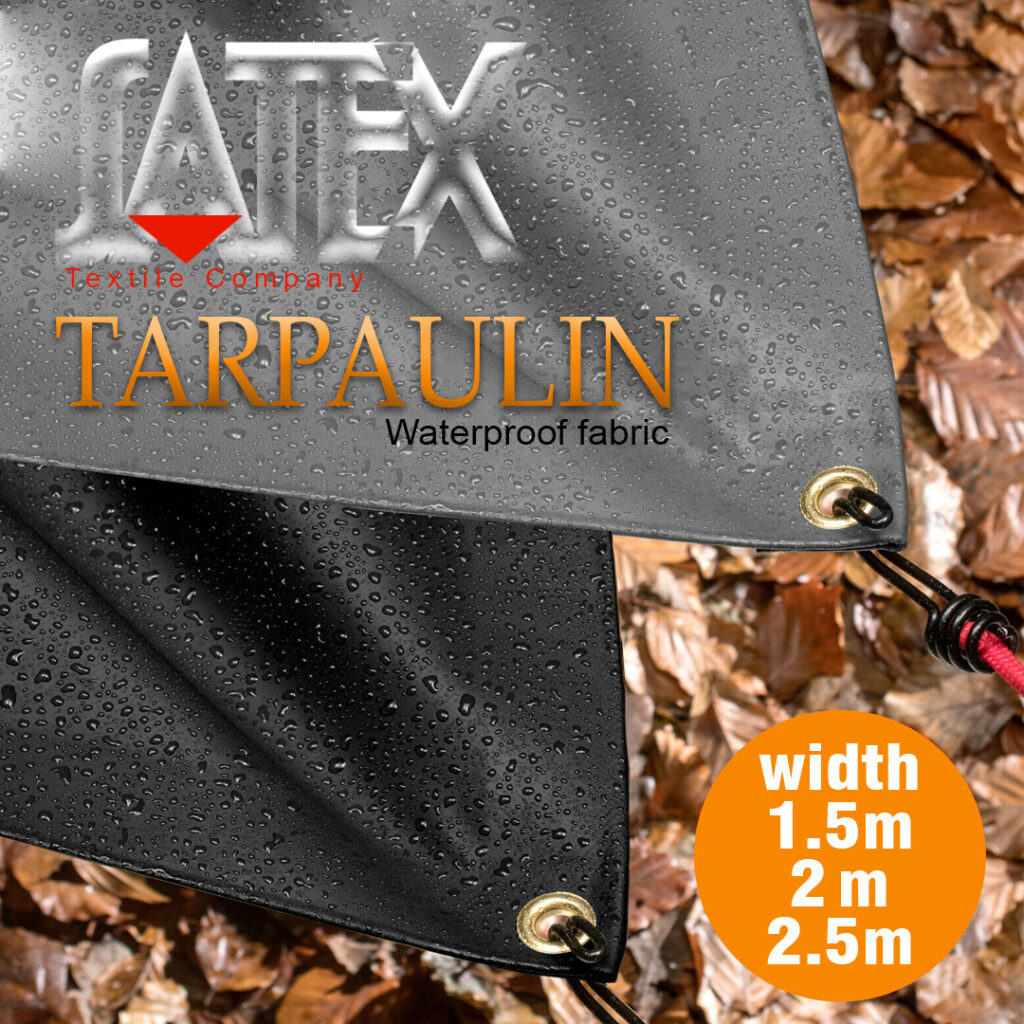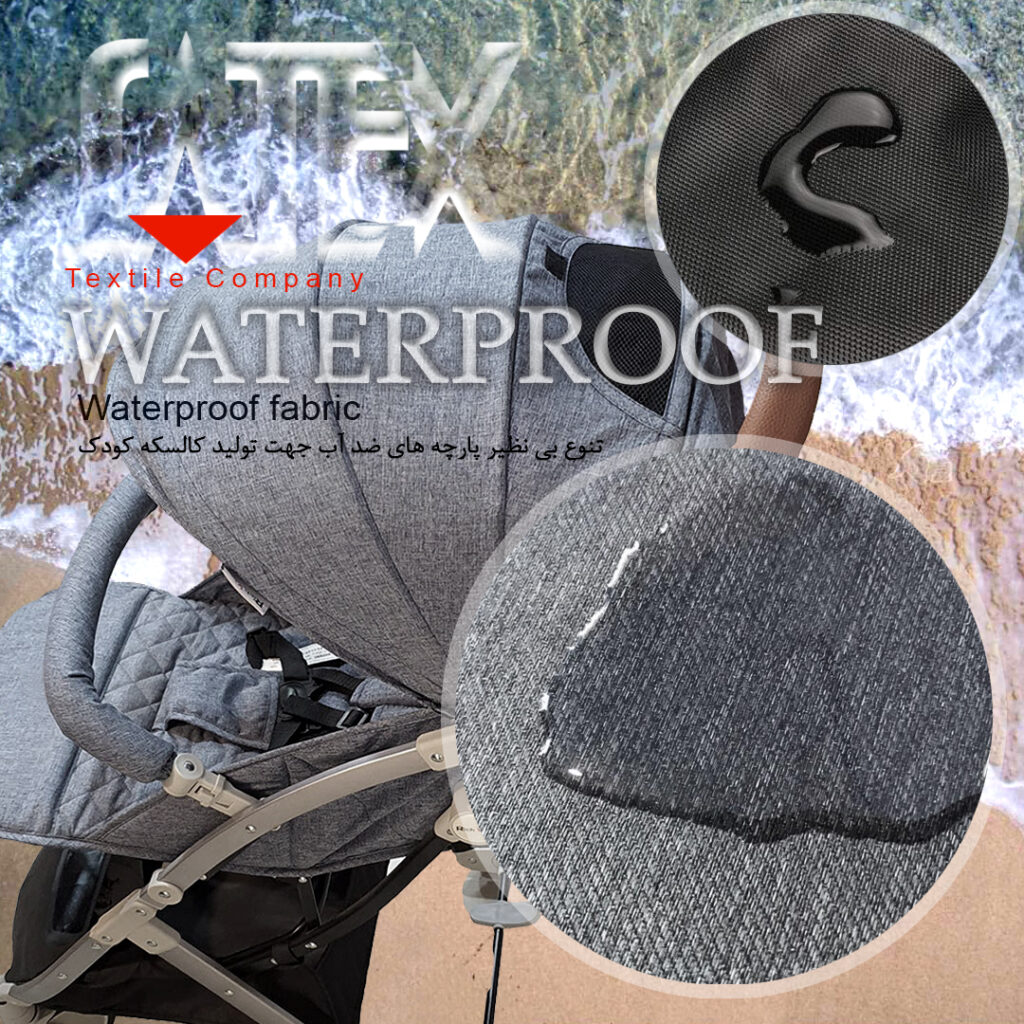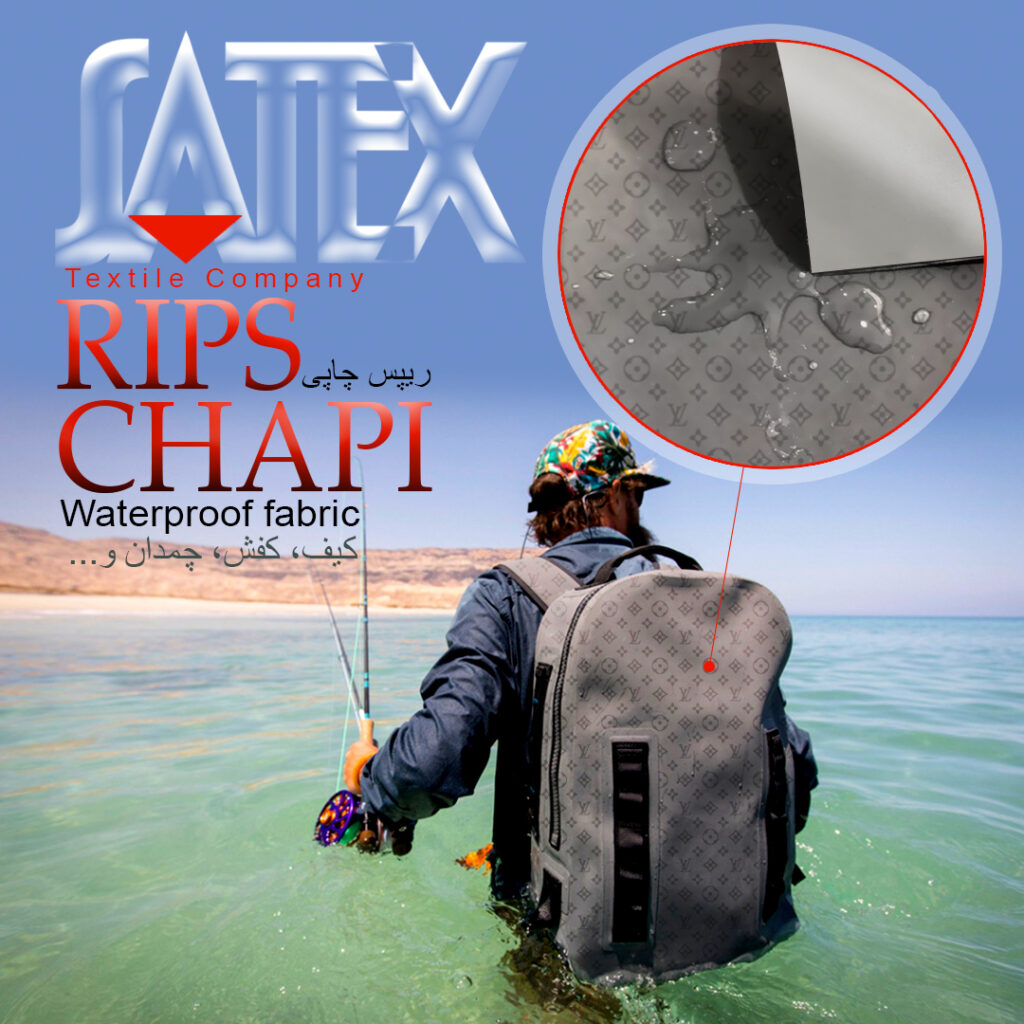SATEX COMPANY
Sutex has increased the quality of production to such an extent that not only has it introduced special and new materials to manufacturers, but it has also increased customers’ expectations from their products to the point that there is no longer any acceptance of low quality products in the country. Providing environmentally friendly and health-oriented products is one of the honors of Mujir Espadana textile collection. The purpose of this collection is to provide fabrics with a degree of elegance and quality that are in the dignity of consumers.
product introduction
Waterproofing is one of the complementary methods in which the surface is covered with a polymer layer by padding on the fabric and curing and fixing is done with the help of temperature. The purpose of this completion is to create conditions through which water droplets on the surface of the product do not penetrate into it. Waterproof goods are mostly used as waterproof fabrics and waterproof, stain and oil resistant floors. An unavoidable problem of the materials used to complete the waterproofing is their low stability due to the low strength of the joints created by the crosslinks. To produce these new compounds, a special type of fluorocarbons and isocyanates called reinforcers are used. اند. With this fluoride, the goods are cleaned faster during household washing and the impurities are easily removed from its surface.
Satex waterproofing materials are based on fluorocarbon, which in addition to the waterproof and oily properties they give to the fabric, are able to react with the fiber and form stable finishes on the fiber, which are protected against water penetration due to the operations performed on them. And are moisture resistant. Fabrics are usually natural or synthetic fabrics that are coated with a special waterproof material.
Waterproof fabrics are available in different types and with different compositions. The materials used in waterproof fabrics play a very important role, which is basically a coating produced as a prefabricated layer in the form of rolls or sheets. The size, length and width of the waterproofing fabric change according to the need.
Today, the use of waterproof fabrics is the best way to deal with moisture. Moisture insulation fabric is a building material that is used to prevent moisture from entering the interior of the structure. Because moisture leakage eventually weakens and destroys the structure. The tarpaulin fabric is both fireproof and waterproof, which you can use in any case wherever you want, both as a canopy and you can make the clothes you prepare for your work from this type of fabric.
PVC fabric is a kind of waterproof fabric that you can also use this type of fabric for canopies or travel tents that you prepare, you can consider its material and provide PVC.

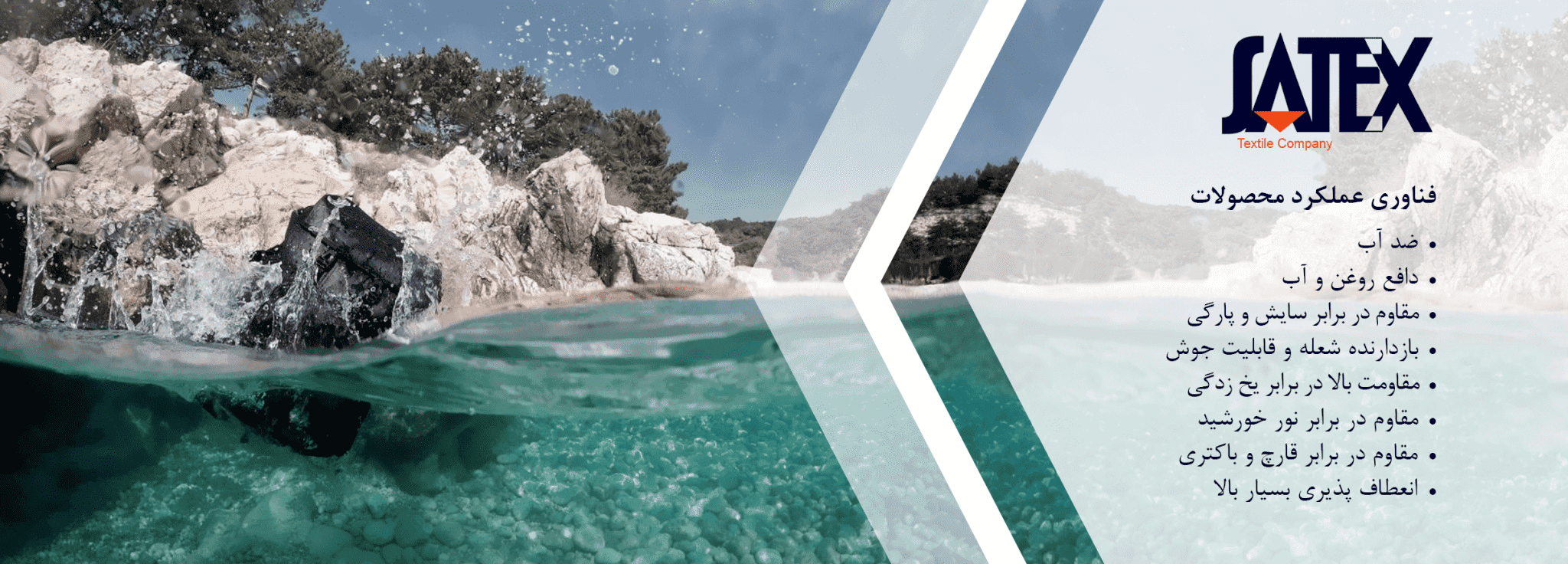
Familiarity with waterproof fabrics
Waterproof fabrics are fabrics that are resistant to water penetration and moisture due to the operations performed on them.
These types of fabrics are usually natural or synthetic fabrics that are covered with special waterproof materials.
Waterproof fabrics are available in different types and with different compositions. The materials used in waterproof fabrics play a very important role.
Waterproof fabric is basically a cover that is produced as a prefabricated layer in the form of a roll with a sheet. The size, length and width of the waterproofing fabric change according to the need.
Today, the use of waterproof fabrics is the best way to deal with moisture. Moisture insulation fabric is a building material that is used to prevent moisture from entering the interior of the structure. Because moisture leakage eventually weakens and destroys the structure.
The tarpaulin fabric is both fireproof and waterproof, which you can use in any case wherever you want, both as a canopy and you can make the clothes you prepare for your work from this type of fabric.
PVC fabric is a kind of waterproof fabric that you can also use this type of fabric for canopies or travel tents that you prepare, you can consider its material and provide PVC.
Waterproof and waterproof material
PUL stands for Polyamide Laminate. PUL is a fabric with a plastic coating with a thin and water-resistant coating and is one of the types of waterproof and stain-resistant fabrics. The best thing about PUL fabrics is that they are completely waterproof, very It is durable and breathable and you can easily put it next to the skin, because part of the fabric is soft, flexible and comfortable. You get PUL fabric in a thickness of 1 mm and 2 mm from the plastic cover. . The fabric can be woven, 100% cotton or a combination of polyester and cotton.
PUL polyester is thinner and softer than cotton PUL. The best feature about PUL fabric is that you can wash it several times without damaging the fabric.
TPU stands for Polyurethane Thermoplastic, a better alternative to PUL fabric, and competes significantly with PUL in the manufacture of water-resistant products such as cloth diapers. This type of soft fabric is more flexible and does less damage to the environment than PUL with the same function. May be less durable than PUL.
These materials alone are not waterproof. But with a special coating, it is used to make the most waterproof materials such as umbrellas, and after this coating, it becomes one of the types of waterproof and stain-resistant fabrics.
This fabric is very light and wind resistant and is made of nylon fibers – after the waterproof coating is created, the surface of the fabric becomes resistant to water penetration. In World War II, it was used to build parachutes! Today, with waterproof, water-resistant properties, it is used to make tents, outdoor furniture coverings, waterproof clothing, backpacks, kites and work clothes. You can make jackets, ponchos, etc. with ripstop nylon.
Taffet nylon with a special coating is definitely waterproof – this material is often used for raincoats, patio umbrellas and so on.
Laminated fabrics are an alternative to PUL materials because they fall into one category. A thin waterproof coating is applied to the fabric. Laminated fabric is used to make weather protective clothing such as raincoats, winter coats, ski suits, protective coats, hats; This fabric has a dry and comfortable structure in severe weather conditions. Layering is added by attaching a water-resistant layer to the back of the fabric. By adding a layer, the fabric becomes flexible. Cotton laminate fabric is extremely suitable for making many materials because it is breathable and flexible. A sheet about 1 mm thick is placed on the fabric.
Poplin laminate fabric is a favorite of many international brands for making protective clothing, including coats. There are mainly 3 types of layering – non-porous laminate, micro-porous laminate, viscous coating and viscose.
Linoleum, also known as enamel or American fabric, is a densely woven cotton fabric with a coating of liquid oil for waterproofing. Of course, this is a previous version of linoleum. Today, modern linoleum is a vinyl-coated cotton fabric that can be glossy or matte.
Due to its properties such as hardness, durability and ease of cleaning, it is very suitable for making tablecloths, covers, suitcases, tapo bags, kitchen utensils, etc., but it is not very suitable for use in clothing.
Wool can be water resistant depending on its quality. The denser the wool, the more water is excreted.
Due to their water repellent properties, they are used in the outer layer of diapers. Also, by covering it with a special water repellent layer, the wool can be more water repellent than before.
Polyester microfiber fabric with a special waterproof coating is available – which is 100% waterproof and is used to make clothes such as suits and sweaters.
Wool is naturally water resistant (waterproof) and is a natural fabric that is our USP. If coated with lanolin, its resistance to water will increase, but this must be done periodically. You can buy cooked wool that is very water resistant – this wool is placed in hot boiling water and as a result it increases its density to increase its waterproof quality.
These synthetic materials are waterproof and are commonly used in sewing especially for making cosmetic bags, tops bags, beach bags, and so on. If you are building marine interiors and boat accessories, you will need to purchase 100% waterproof vinyl fabric such as expanded vinyl (polyvinyl chloride) with backing fabric or vinyl and composite polyester fabric.
Naughayde is an American brand of vinyl material designed to resemble synthetic leather made from a rubber-coated fabric or vinyl resin. It is a leather-like fabric that is hard, durable and flexible.
Fabrics made from cotton or synthetic filament yarns and microglues with a compact fabric structure are very resistant to water penetration and have even been proven to be waterproof, because they are made for this purpose – there are very few pores between them. So that water does not pass through them. As the manufacturers claim, thick woven textile fabrics also protect against wetting from the rain.
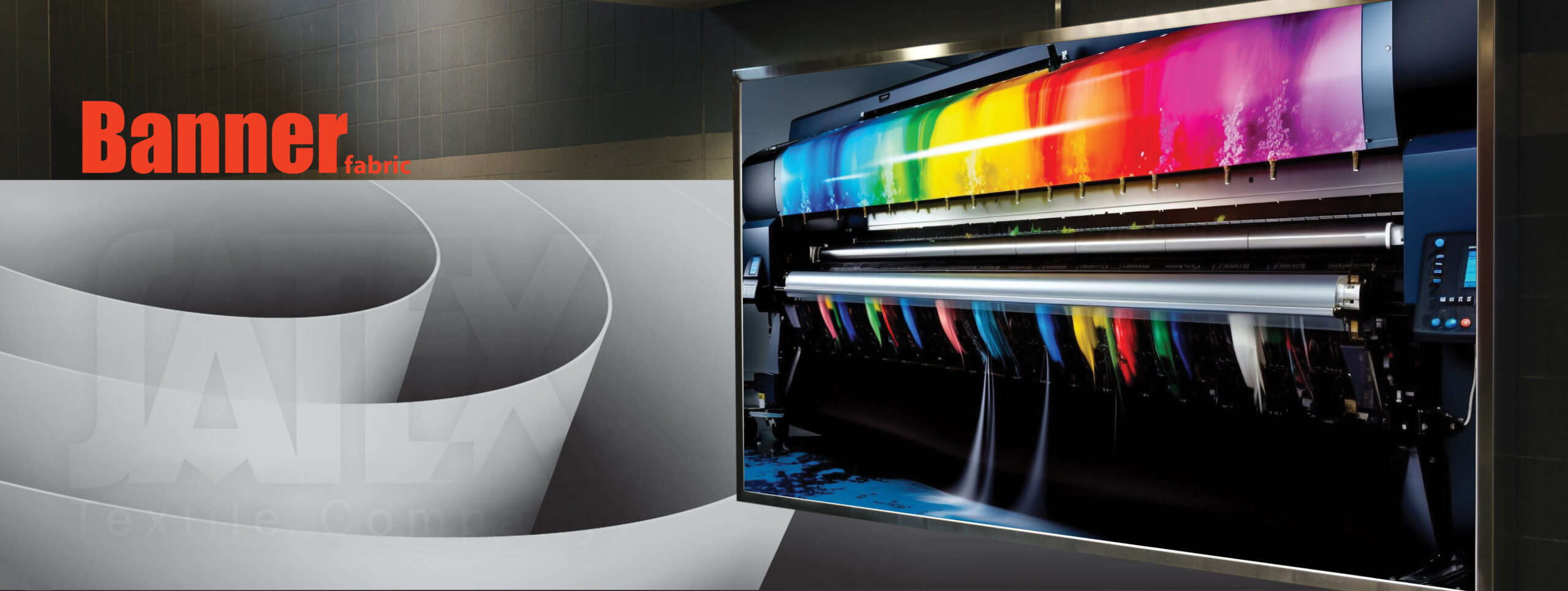
Production of banner fabrics
10 ounces Satex banner fabrics have unparalleled resistance, high printability and the best quality that is offered in different dimensions.
As a point, remember that both in the discussion of fabrics and banners (which are themselves a type of fabric), the number of warp and weft yarns change these variables. For example, a fabric may have a texture of 300 x 500 or 300 x 200. These numbers, which means the number of yarns and fabrics in a square meter (unit of area), the more the fabric has less empty space and compressed Is more, thus seen with greater difficulty and a more stable structure.
Ounces in fabrics means mass in grams per square meter, so if the fabric was 10 ounces, it means that 1.1 meters weighs 10 grams. In general, increasing the banner means increasing their quality in accepting color, maintaining different designs and patterns in the long run and having high resistance to scratches or cuts.
Isfahan factory office
Contact number: 35720500 031
Fax: 7200
Tehran Sales Office
02134245 – 02133548949
Mashhad sales representative
09153160620 , 09153115488
Tabriz sales representative
09144064205 , 04135255375
Afghanistan Sales Representative
09120525632 , 78274798 0093


